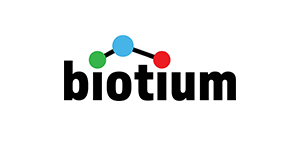SIGLEC1 / CD169 / Sialoadhesin(HSn 7D2), 1mg/mL
SIGLEC1 / CD169 / Sialoadhesin(HSn 7D2), 1mg/mL
Artikelnummer
BTMBNUM2843-50
Verpackungseinheit
50 uL
Hersteller
Biotium
Verfügbarkeit:
wird geladen...
Preis wird geladen...
Quote the promo code SZANTIBODY when ordering to receive a 10% discount on this antibody, from October 1st to December 31st 2024. No additional discounts during the promo.
Description: Two families of mammalian lectin-like adhesion molecules, the selectins and the sialoadhesins, bind glycoconjugate ligands in a sialic acid-dependent manner. The sialic acid-binding immunoglobulin superfamily lectins, designated siglecs or sialoadhesins, are immunoglobulin superfamily members that recognize sialylated ligands. The common sialic acids of mammalian cells are N-acetylneuraminic acid (Neu5Ac) and N-glycolylneuraminic acid (Neu5Gc). The human Siglec-1 gene maps to chromosome 20p13 and encodes a 1, 709 amino acid protein, also known as CD169. Alternative splicing of the Siglec-1 gene produces a variant, encoding a type I transmembrane protein isoform that is soluble rather than membrane-bound. Studies have shown human Siglec-1 has greater affinity for Neu5Ac over Neu5Gc. Siglec-1 is a sialic acid-binding receptor that is expressed in hemopoietic cells. It mediates local cell-cell interactions in lymphoid tissues and can be detected at contact points of macrophages with other macrophages, sinus-lining cells and reticulum cells. Primary antibodies are available purified, or with a selection of fluorescent CF® Dyes and other labels. CF® Dyes offer exceptional brightness and photostability. Note: Conjugates of blue fluorescent dyes like CF®405S and CF®405M are not recommended for detecting low abundance targets, because blue dyes have lower fluorescence and can give higher non-specific background than other dye colors.
Conjugate: Purified, BSA-free
Concentration: 1 mg/mL
Storage buffer: PBS, no BSA, no azide
Product Origin: Animal - Mus musculus (mouse)
Clone: HSn 7D2
Entrez Gene ID: 6614
Immunogen: Fc fusion protein containing N-terminal 4 domains of human sialoadhesin.
Expected AB Applications: Flow, surface (published for clone)/Functional studies (published for clone)/IHC (FFPE) (published for clone)/WB (published for clone)
Z-Antibody Applications: Flow, surface (published)/Functional studies (published)/IHC, FFPE (published)/WB (published)
| Artikelnummer | BTMBNUM2843-50 |
|---|---|
| Hersteller | Biotium |
| Hersteller Artikelnummer | BNUM2843-50 |
| Verpackungseinheit | 50 uL |
| Mengeneinheit | STK |
| Reaktivität | Human |
| Klonalität | Monoclonal |
| Methode | Western Blotting, Flow Cytometry, Immunohistochemistry, Functional Studies |
| Isotyp | IgG1 kappa |
| Wirt | Mouse |
| Konjugat | Unconjugated |
| Produktinformation (PDF) | Download |
| MSDS (PDF) | Download |

 English
English







